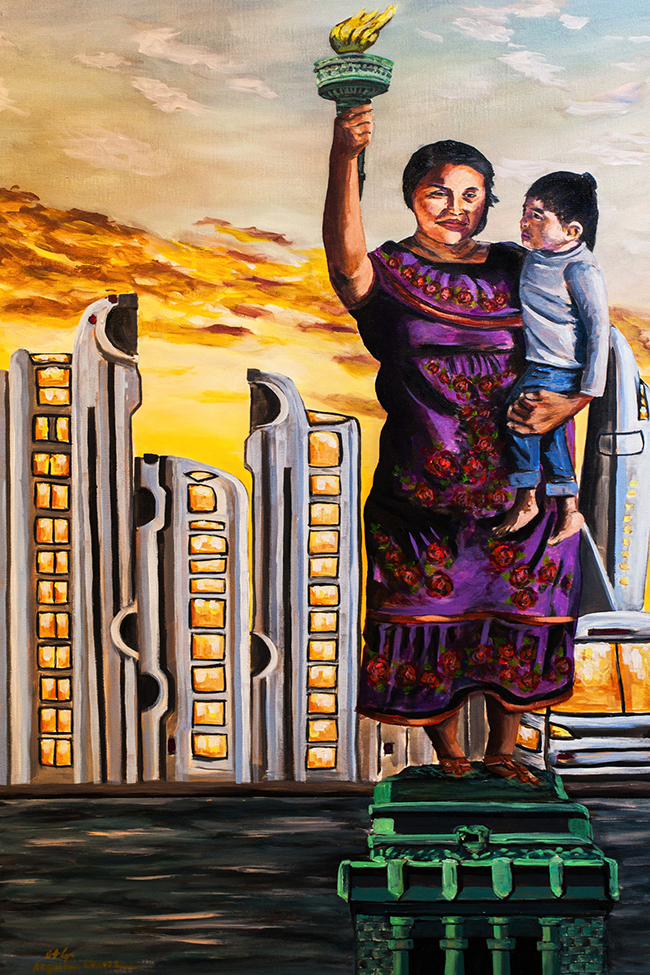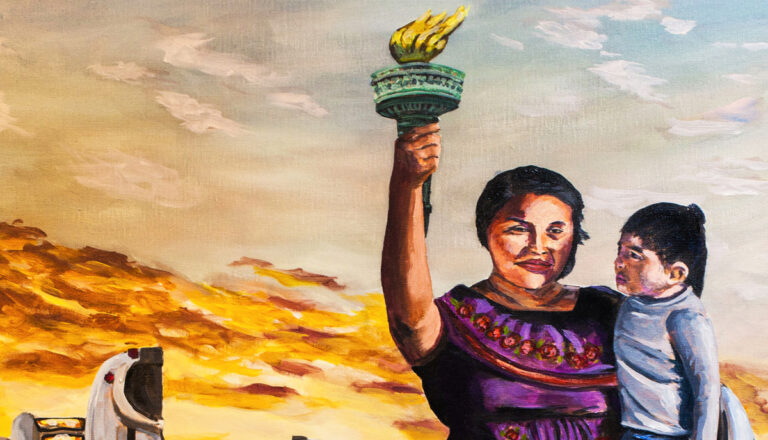In the heart of San Marcos, Texas, resides an artist with a profound mission — Augustine Chavez. His work delves into the intricate and often controversial realm of undocumented immigration, drawing inspiration from the daily political discourse surrounding the deportation of these individuals. With a multifaceted approach that spans painting, sculpture, photography, concrete, and found objects, Chavez crafts a narrative that challenges stereotypes and advocates for the often-overlooked contributions of undocumented immigrants in the United States.

Chavez’s artistic journey is driven by a desire to give voice to those who live and work on the fringes of society. His pieces serve as a powerful medium to shed light on the misconceptions surrounding undocumented immigrants. One of his central themes revolves around countering the prevalent narrative that paints these individuals as criminals. Instead, Chavez redirects the narrative, showcasing the invaluable role they play in constructing the very foundations of our society.
The artist’s commitment to addressing societal issues is evident in his exploration of the transportation of immigrants from Texas to New York. In his work, Chavez vividly captures the plight of undocumented individuals used as pawns in the political chessboard. Buses and planes, once symbols of travel and freedom, now become vessels of uncertainty and displacement for those seeking a better life. Through his art, Chavez prompts viewers to reflect on the humanitarian aspects of this issue, urging society to recognize the human stories behind the statistics.
One poignant aspect of Chavez’s work is his emphasis on the makeshift homes that buses and planes become for undocumented immigrants. In doing so, he challenges preconceived notions and offers a new perspective on the concept of ‘home.’ For many undocumented individuals, these modes of transportation transform into sanctuaries, emphasizing the need for empathy and understanding in the ongoing discourse on immigration.
Chavez’s choice of materials adds a layer of authenticity to his art. Utilizing concrete and found objects, he creates a raw and unfiltered representation of the undocumented workforce. This approach not only reflects the harsh realities faced by these individuals but also serves as a visual testament to their resilience and adaptability.
Through photography, Chavez captures the essence of his subjects, immortalizing the faces and stories that often go unnoticed. Each image tells a tale of struggle, hope, and determination, challenging viewers to confront their biases and preconceptions. The conversational tone in his art invites audiences to engage with the narratives he presents, fostering a dialogue on the complexities of immigration.
In the realm of sculpture, Chavez masterfully shapes his message. The three-dimensional nature of his sculptures adds depth to the stories he tells, making the audience physically confront the issues at hand. This immersive experience sparks contemplation, encouraging viewers to question their perspectives and rethink the narratives perpetuated by societal discourse.
Augustine Chavez’s art serves as a reminder that behind every policy and statistic, there are real people with real stories. His commitment to advocating for the undocumented workforce challenges us to look beyond political rhetoric and recognize the humanity that unites us all.

